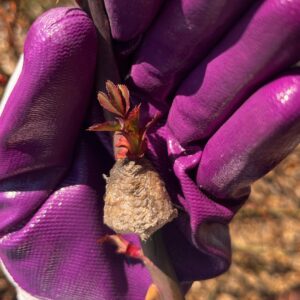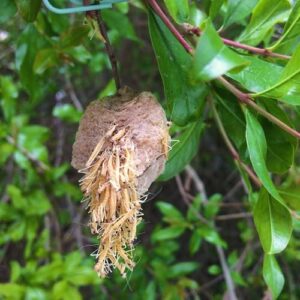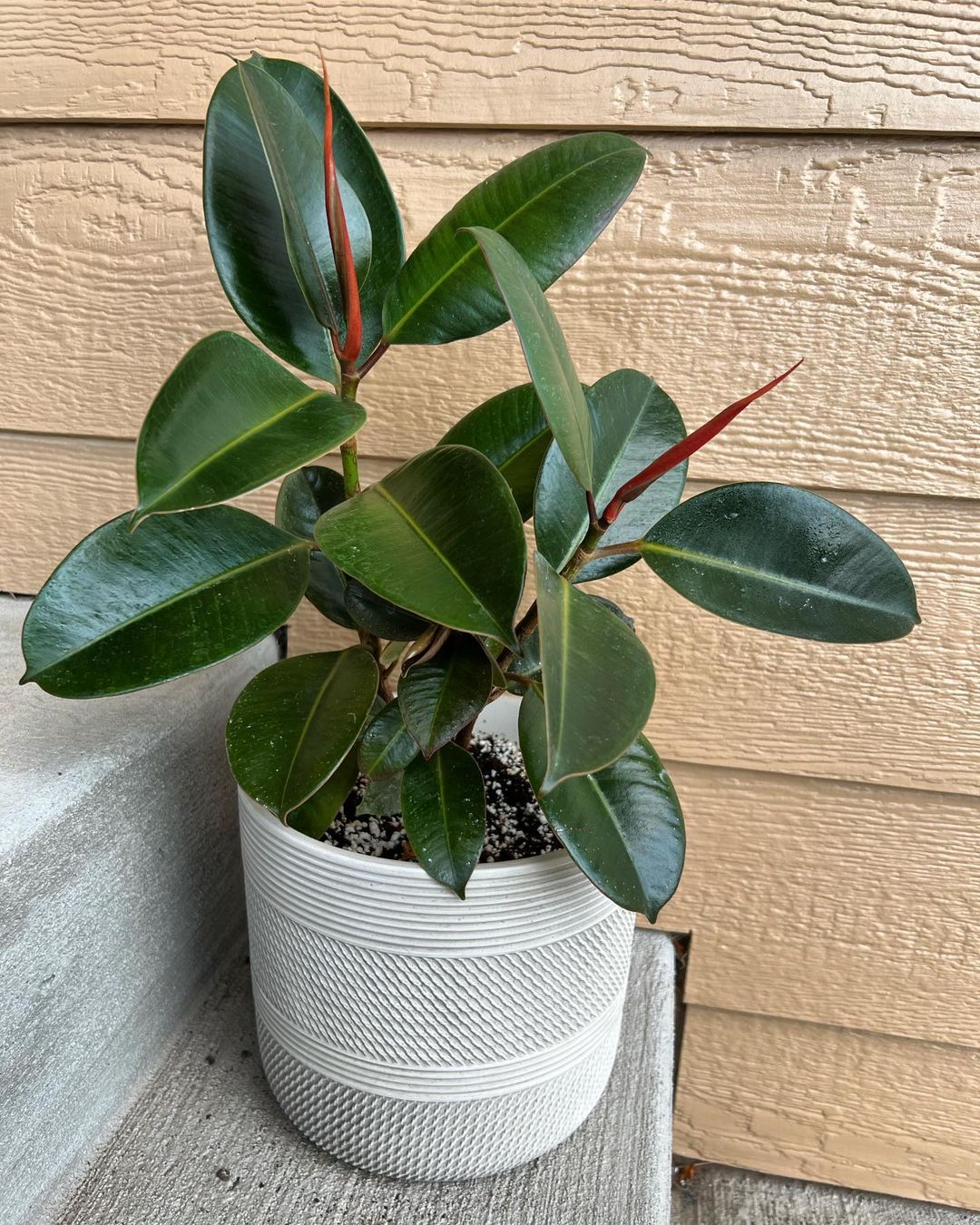Uncover Praying Mantis Egg Sac Information and Facts. Explore the details of these mysterious and remarkable beneficial insects.
Read in detail about Praying Mantis Egg Sac Information and Facts. These sacs contain a cluster of eggs that safeguard the future generation of these remarkable insects, offering a wealth of details about their reproduction and survival strategies.
Common Names: Praying Mantis, Soothsayer, Mantis, Praying mantid
Scientific Name: Mantidae
Find out Do Deer Eat Camellias?
What is a Praying Mantis?

Praying mantis earned their name from their long front legs, which they hold in a position resembling prayer. They are large, slow-moving insects with unique front legs for capturing prey.
Mantis have flexible necks and can turn their heads. They are beneficial predators, often green or brown, and some North American species have wings.
Praying mantids are carnivorous creatures that primarily feed on insects and small animals. They consume a variety of prey, including crickets, grasshoppers, spiders, frogs, lizards, and even small birds. People appreciate praying mantises for their role in natural pest control, as they help manage insect populations and contribute to ecological balance.
Grow Firebush to Attract Hummingbirds
What is Praying Mantis Egg Sac?

Praying mantis exhibits an intricate life cycle, beginning with cannibalistic mating and encompassing an egg stage over winter, followed by a nymph phase leading to adulthood. Praying mantis egg sacs are commonly found across North America, though in colder regions.
The praying mantis egg sac serves as a safeguarding structure, providing shelter to multiple eggs. Typically composed of a foam-like or papery material, it acts as a nurturing haven for the developing mantis embryos.
Female mantises take great care in constructing these sacs, ensuring the eggs are protected from predators and environmental elements. Within the sac, the eggs undergo an incubation period until they hatch into young mantises. These egg sacs play a vital role in ensuring the survival and continuity of the praying mantis population.
When Do Mantis Sacs Hatch?

As temperatures warm in spring, the predatory insects within the casings start to emerge. It is advisable to search for these cases from late fall to early spring. Female mantises lay eggs on various surfaces, such as twigs, stems, walls, fences, house siding, and roofs. The sacs may be challenging to spot initially, but they become more noticeable when trees shed their leaves.
How Many Eggs Do Praying Mantis Lay?

In a single sac, the relatively small insect can lay up to 300 eggs. However, only around one-fifth of the nymphs will reach adulthood, highlighting the significance of safeguarding the egg sacs to ensure the preservation of the next generation of formidable predators.
Check 25 Best Companion Plants for Pest Control
What Does Praying Mantis Egg Sac Look Like?

Before the adult female praying mantis dies with the onset of frost, she lays eggs. These eggs are enclosed in a rectangular sac, approximately 1 inch (3 cm) in size, with rounded edges and a tan-to-white color. The eggs are enveloped in a hardened, frothy foam known as the ootheca.
What to do with Praying Mantis Egg Sac?

If you find a praying mantis egg sac in your garden, here’s what you should do:
1. Do Not Disturb It
If you come across a praying mantis egg sac in your garden or yard and want to encourage a population of praying mantises. It is best to leave the sac undisturbed. Allowing the eggs to hatch naturally contributes to natural pest control.
2. Resettle
If you meet a praying mantis egg sac and wish to observe the hatching process. Place it in a plastic or glass jar with adequate air holes. Bring it indoors; the warmth will speed up hatching through four to six weeks for immature sacs or immediately if the sac is set up late in winter.
Tip: Please remember, if you choose to handle or relocate the praying mantis egg sac. Handle it gently and carefully to prevent any harm to its delicate structure.
How Praying Mantis is Helpful in the Garden?

After reading about Praying Mantis Egg Sac Information, let’s find out hows these tiny creatures are helpful in your garden.
- In the garden, praying mantises serve as beneficial natural predators, effectively managing pest and insect populations.
- Their diet encompasses a range of garden pests, such as flies, mosquitoes, aphids, moths, and beetles.
- Choosing praying mantises as an eco-friendly alternative to chemical pesticides can diminish the necessity for harmful substances in your garden.
- Additionally, these captivating creatures offer educational prospects for understanding insect life cycles and behavior through observation.
- By incorporating praying mantis egg sacs into your garden, you enhance biodiversity and promote a robust ecosystem.
- These insects pose no threat to humans, as they are non-aggressive and generally harmless, making them a secure and beneficial addition to your garden environment.
- For nature enthusiasts, observing the emergence of adult mantises from egg sacs and looking at their remarkable hunting abilities can provide a rewarding and delightful experience.
Find What Do Hummingbirds Love to Eat?



